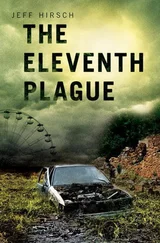Anthony Summers - The Eleventh Day
Здесь есть возможность читать онлайн «Anthony Summers - The Eleventh Day» весь текст электронной книги совершенно бесплатно (целиком полную версию без сокращений). В некоторых случаях можно слушать аудио, скачать через торрент в формате fb2 и присутствует краткое содержание. Жанр: Старинная литература, на английском языке. Описание произведения, (предисловие) а так же отзывы посетителей доступны на портале библиотеки ЛибКат.
- Название:The Eleventh Day
- Автор:
- Жанр:
- Год:неизвестен
- ISBN:нет данных
- Рейтинг книги:3 / 5. Голосов: 1
-
Избранное:Добавить в избранное
- Отзывы:
-
Ваша оценка:
- 60
- 1
- 2
- 3
- 4
- 5
The Eleventh Day: краткое содержание, описание и аннотация
Предлагаем к чтению аннотацию, описание, краткое содержание или предисловие (зависит от того, что написал сам автор книги «The Eleventh Day»). Если вы не нашли необходимую информацию о книге — напишите в комментариях, мы постараемся отыскать её.
The Eleventh Day — читать онлайн бесплатно полную книгу (весь текст) целиком
Ниже представлен текст книги, разбитый по страницам. Система сохранения места последней прочитанной страницы, позволяет с удобством читать онлайн бесплатно книгу «The Eleventh Day», без необходимости каждый раз заново искать на чём Вы остановились. Поставьте закладку, и сможете в любой момент перейти на страницу, на которой закончили чтение.
Интервал:
Закладка:
A second allegation, persistently propagated before and after 9/11 by Laurie Mylroie, a scholar associated with the conservative think tank American Enterprise Institute, proposed that Ramzi Yousef—the terrorist responsible for the 1993 World Trade Center bombing—had been an Iraqi agent using a stolen identity. Investigation by others, including the FBI, indicated that the speculation is unsupported by hard evidence.
Mylroie, meanwhile, appeared to believe that Saddam Hussein had been behind multiple terrorist attacks over a ten-year period, from the East Africa embassy bombings to Oklahoma City and 9/11. “My view,” said Vincent Cannistraro, a former head of the CIA’s Counterterrorist Center, “is that Laurie has an obsession with Iraq.” Mylroie’s claim about Yousef nevertheless proved durable.
None of the speculative leads suggesting an Iraqi link to the attacks proved out. “We went back ten years,” said former CIA bin Laden unit chief Michael Scheuer, who looked into the matter at the request of Director Tenet. “We examined about 20,000 documents, probably something along the line of 75,000 pages of information, and there was no connection between [al Qaeda] and Saddam.”
A CIA report entitled “Iraqi Support for Terrorism,” completed in January 2003, was the last in-depth analysis the Agency produced prior to the invasion of Iraq in March. “The Intelligence Community,” it concluded, “has no credible information that Baghdad had foreknowledge of the 11 September attacks or any other al Qaeda strike.”
After exhaustive trawls of the record, official probes have concluded that senior Bush administration officials applied inordinate pressure to try to establish that there was an Iraqi connection to 9/11, and that American torture of al Qaeda prisoners was a result of such pressure. CIA analysts noted that “questions regarding al Qaeda’s ties to the Iraqi regime were among the first presented to senior operational planner Khalid Sheikh Mohammed following his capture.” KSM was one of those most persistently subjected to torture.
The CIA’s Charles Duelfer, who was in charge of interrogations of Iraqi officials after the invasion, recalled being “asked if enhanced measures, such as waterboarding, should be used” on a detainee who had handled contacts with terrorist groups and might have knowledge of links between the Hussein regime and al Qaeda.
The notion was turned down. Duelfer noted, however, that it had come from “some in Washington at very senior levels (not in the CIA)” who thought the detainee’s interrogation had been “too gentle.” Two U.S. intelligence officers, meanwhile, have said flatly that the suggestion came from Vice President Cheney’s office.
“There were two reasons why these interrogations were so persistent and why extreme methods were used,” a former senior intelligence official said in 2009. “The main one is that everyone was worried about some kind of follow-up attack [after 9/11]. But for most of 2002 and into 2003, Cheney and Rumsfeld, especially, were also demanding proof of the links between al Qaeda and Iraq that [former Iraqi exile leader Ahmed] Chalabi and others had told them were there.”
A former U.S. Army psychiatrist, Major Paul Burney, told military investigators that interrogators at the Guantánamo Bay detention center were under “pressure” to produce evidence of ties between al Qaeda and Iraq. “We were not successful,” Burney said in interviews for the Army’s inspector general, but “there was more and more pressure to resort to measures that might produce more immediate results.”
In the absence of evidence, according to the author and Pulitzer winner Ron Suskind, it was in one instance fabricated. Suskind has reported that in fall 2003—when the U.S. administration was still struggling to justify the invasion of Iraq—the White House asked the CIA to collaborate in the forgery of a document stating that hijacker leader Atta had spent time training in Iraq.
The forgery took the form of a purported memo to Saddam Hussein from the former head of the Iraqi intelligence service. The memo was dated two months before 9/11—the actual former intelligence chief was prevailed upon to put his signature to it long after its supposed writing—and it stated that Atta had just spent time training in Iraq “to lead the team which will be responsible for attacking the targets that we have agreed to destroy.”
The story of this fakery raised a brief media storm and a spate of denials. Rebuttals included a carefully phrased statement from Suskind’s primary source, a former head of the CIA’s Near East Division named Rob Richer—to which Suskind responded by publishing a transcript of one of his interviews with Richer.
Another former CIA officer, Philip Giraldi, meanwhile, placed responsibility for the fabrication on the Pentagon’s Office of Special Plans, at the instigation of Vice President Cheney. According to Giraldi, the Pentagon, unlike the CIA, had “no restrictions on it regarding the production of false information to mislead the public” and had “its own false documents center.”
If it happened, the forgery was the most flagrant attempt, in a long line of such maneuvering, to blame 9/11 on Iraq—and it has never been officially investigated.
A former deputy director of the CIA’s Counterterrorist Center, Paul Pillar, has called the case against Iraq “a manufactured issue.”
In 2008, by a bipartisan majority of ten to five, the Senate Intelligence Committee produced its “Report on Whether Public Statements Regarding Iraq by U.S. Government Officials Were Substantiated by Intelligence Information.” “Unfortunately,” said its chairman, John D. Rockefeller,
our Committee has concluded that the administration made significant claims that were not supported by the intelligence. In making the case for war, the administration repeatedly presented intelligence as fact when in reality it was unsubstantiated, contradicted, or even non-existent.
It’s my belief that the Bush administration was fixated on Iraq and used the 9/11 attacks by al Qaeda as justification for overthrowing Saddam Hussein. To accomplish this, top administration officials made repeated statements that falsely linked Iraq and al Qaeda as a single threat and insinuated that Iraq played a role in 9/11. Sadly, the Bush administration led the nation into war under false pretenses.
IN THE SEVEN YEARS since the invasion of Iraq, reputable estimates indicate, more than 4,000 American soldiers have died and 32,000 have suffered serious injury as a result of the invasion and the violence that followed. Some 9,000 Iraqi men in uniform were killed, and 55,000 insurgents. Figures suggest that more than 100,000 civilians died during and following the invasion.
A total of some 168,000 people, then, have died—and tens of thousands have been injured—as the result of an attack on a nation that many Americans had been falsely led to believe bore some if not all of the responsibility for the attacks of September 11.
The 3,000 who died in New York, Washington, and the field in Pennsylvania, the many hundreds who have died since from exposure to the toxins they breathed in at Ground Zero, and all their grieving relatives, deserved better than to have had their tragedy manipulated in such a way.
THIRTY-FIVE
IN THE YEARS THAT THE CONFLICT IN IRAQ HAD THE WORLD’S ATTENTION, the real evidence that linked other nations to Osama bin Laden and 9/11 faded from the public consciousness. This was in part the fault of the 9/11 Commission, which blurred the facts rather than highlighting them. It was, ironically, a former deputy homeland security adviser to President Bush, Richard Falkenrath, who loudly expressed that uncomfortable truth.
Читать дальшеИнтервал:
Закладка:
Похожие книги на «The Eleventh Day»
Представляем Вашему вниманию похожие книги на «The Eleventh Day» списком для выбора. Мы отобрали схожую по названию и смыслу литературу в надежде предоставить читателям больше вариантов отыскать новые, интересные, ещё непрочитанные произведения.
Обсуждение, отзывы о книге «The Eleventh Day» и просто собственные мнения читателей. Оставьте ваши комментарии, напишите, что Вы думаете о произведении, его смысле или главных героях. Укажите что конкретно понравилось, а что нет, и почему Вы так считаете.











